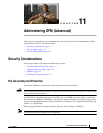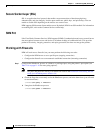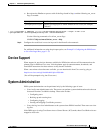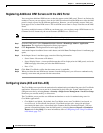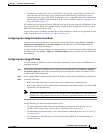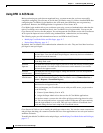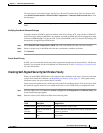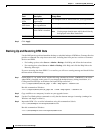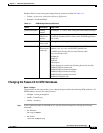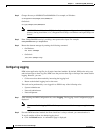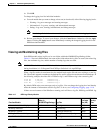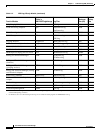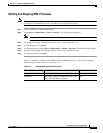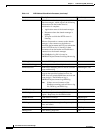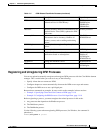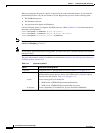
11-3
User Guide for Device Fault Manager
OL-11390-01
Chapter 11 Administering DFM (Advanced)
Device Support
c. Re-register the DfmServer process with all the flags found in Step a and the following sm_server
flags, as needed:
#
NMSROOT
/bin/pdcmd -r DfmServer -e
NMSROOT
/objects/smarts/bin/sm_server --output -n DFM -c icf
--privopen=UDP:162 --bootstrap=DFM_bootstrap.conf --subscribe=default"
Use the following command to list all sm_server flags:
NMSROOT/objects/smarts/bin/sm_server --help
Step 2 Configure the established connection keyword in the firewall to be automatic.
For additional information on using the privopen option, see Example 2: Configuring the DFM Server
to Use a Privileged Port, page 11-19.
Device Support
When support for new devices becomes available for DFM, minor releases will be announced on the
planner page for DFM on Cisco.com. Visit the planner page for announcements, downloads, and
installation instructions for these releases as they become available.
When a new minor release becomes available, you can download it from Cisco.com by going to
http://www.cisco.com/cgi-bin/tablebuild.pl/cw2000-dfm
(You will be prompted to log into Cisco.com.)
System Administration
DFM system administration can be performed only by the following types of users:
• Users in a System Administrator role. These users can perform system administration tasks that can
be started from the CiscoWorks desktop. These tasks include:
–
Configuring users
–
Backing up and restoring data
–
Configuring logging
–
Starting and stopping CiscoWorks processes
• Users who log in as local administrator to the system where DFM is installed. These users can view
log files.
If the DFM server is using CiscoSecure Access Control Server (ACS) mode, these CiscoWorks roles are
mapped to ACS roles.
--port=port Specifies port (for example, on a firewall) on which DfmServer will run
--privopen=protocol:port Specifies privileged port to which DfmServer has access (for example,
UDP:162)



